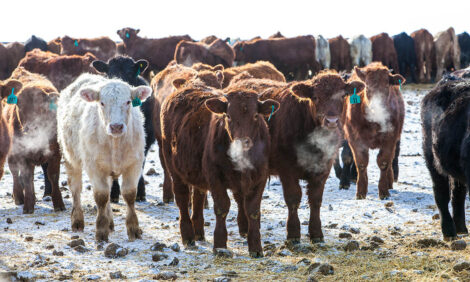



USDA brings technology to beef grading
Small packing plants will be able to grade carcasses virtually“If you were to do a word count on all the speakers, I think marbling would be the biggest,” said Bucky Gwartney, Ph.D., international marketing specialist with USDA’s Agricultural Marketing Service.
Which makes sense, since he was talking to Wagyu breeders and Wagyu is a breed known for exceptional marbling.
“That intramuscular fat (IMF), marbling, really drives our grading programs. It’s one of the main factors in quality grading and the importance of that has really grown over the years,” he told Wagyu breeders during the recent 2023 World Wagyu Conference in San Antonio, Texas.
But that remarkable Wagyu characteristic produces a conundrum—the marbling photos USDA graders use to sharpen their eyes every day before going out on the line to grade beef carcasses were developed 40-plus years ago. Cattle weren’t as genetically predisposed to high-quality Prime carcasses back then. In fact, he said, photos weren’t made for the top two marbling scores in the Prime grade: Abundant and Very Abundant.
The conundrum thickens when you consider that the percent IMF for those two top marbling scores are 21 percent to 24 percent at the 12th rib and that many Wagyu carcasses easily exceed that.
USDA is in the process of adding those top-end pictures to the marbling photo lineup, he said. At the same time, USDA continues to move toward more and more instrument grading. In fact, about 60 percent of beef grading now is done or aided by technology. “That’s going to grow,” he said.
“Graders still have the ultimate authority to look at every carcass, make that decision and override the technology if they’re not in agreement. But right now, we’re committed to using instrument grading. We have to have technology, particularly as we get to those really high levels of marbling,” he said.
However, he told Wagyu breeders that USDA doesn’t think it should add new marbling scores.
“Instead, I think we need to rely on technology to give us objective measures of IMF that we can use and validate,” Gwartney said.
Beyond that, he told Wagyu breeders that USDA began a pilot program early in 2023 to provide virtual grading to small packing plants. That’s good news for Wagyu breeders, since many operate a farm-to-fork branded beef business and rely on small packing plants to process their cattle.
Beef grading is a voluntary service provided by USDA and paid for by the producer or the packing plant. If a plant is only processing a few head a week, it’s too expensive to pay a grader for travel plus the hourly rate.
Inspection, on the other hand, is a separate procedure.
“Everybody has to have product inspected for health and wholesomeness (if they will offer it for sale) when cattle are harvested,” he explained. Since beef inspection is a regulatory program, it’s paid for with taxpayer money.
“Small plant growth has been tremendous,” he said. “So how can we extend our services to small plants in a meaningful and valued way?” The answer: with technology.
Enter camera grading. But challenges abound. “We’ve got to get that image and any other data uploaded so someone can see it in an efficient way and then be able to get that (grade) back to the producer or processor so they can apply the grade stamp (and the value it defines), and then market and merchandise the product,” Gwartney said.
That means USDA must get the technology right.
“The final thing, which is critically important, we’ve got to be able to have trust in the system,” he said. With traditional beef grading, whether a camera is used or not, a human grader looks at every carcass.
In a small plant, it’s all virtual.
“So we’ve got to make sure that we have trust in the system, have security and transparency.” He’s confident that can be done. “We’ve done quite a bit of virtual correlation and virtual grading,” he told Wagyu breeders. “We’re very confident that if we have a good image, we can apply a very good grade.”


